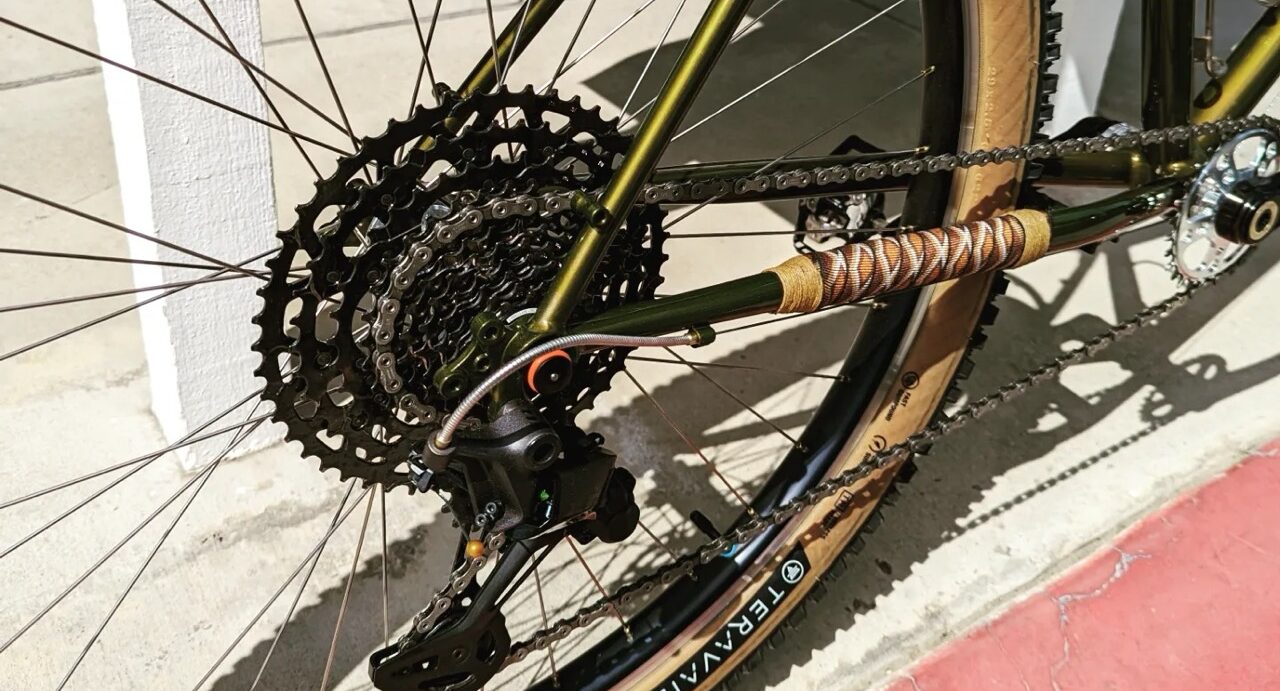I’ll just jump right in. So, I’ve been riding Shimano’s new group, the XT LinkGlide, for almost a year. After logging a few hundred dirt miles on the group, I’ve been mostly impressed. I’ve purposely done some hard shifting while under load on techy climbs. I’ve run it relentlessly, and unnecessarily I might add, up and down the cassette for long periods while riding.
So far it’s taken the abuse with aplomb. Not to mention that you can get the cassette, chain, derailleur, and shifter for the price of some of the cassettes that are on the market right now. So super big kudos to Shimano for that.
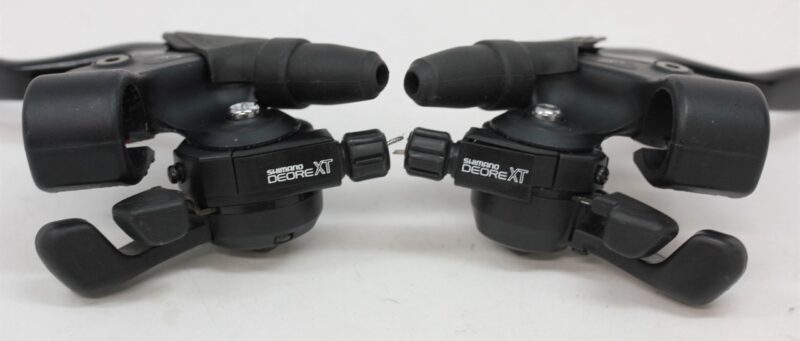
I’ve been a Shimano user for quite some time. And it’s kind of the camp that I’ve hunkered down in since buying my first real mountain bike back in late 1988, early 1990. What sold me on that bike way back then, was the fact that it utilized the brand new XT ST-M091 Rapid Fire “push-push” 7-speed shifters.
Up to that point in my riding, I had not experienced such precise and mindless shifting. That’s a pretty bold statement, I know. But it was friction thumb shifters for me up until then. And, after the rapid-fire shifters, I never looked back.
Hold On…
I just wanted to say, before we do actually jump into it, that I’m not getting super in the weeds for this review. I know it’s easy to do with drivetrain components, but I’m going to resist this and keep this review top-level. That way your eyes won’t glaze over. You can get all techy-tech from our original tech post if you want.
But for this review, I’ll cover how good it looks, what new tech it has, what it weighs, how easy it was to install and adjust on my mountain bike, and what I thought of its performance. And maybe a few anecdotes and opinions along the way. Who knows, we’ll see what kind o’ time we have.
No big whoop… let’s get on with it.
Shimano XT LinkGlide
Back in March 2023, when I was looking to build up my Rivendell Gus Boots Willsen, Shimano had reached out and asked if I wanted to review their new XT LinkGlide group. If you read my stuff, you know I’m not always pumped to try something, just because it’s the “latest-greatest”. So, originally I thought, “Naw, I’m good, thanks! I’ll just use my existing m8000 XT shifter, cassette, and rear derailleur”.
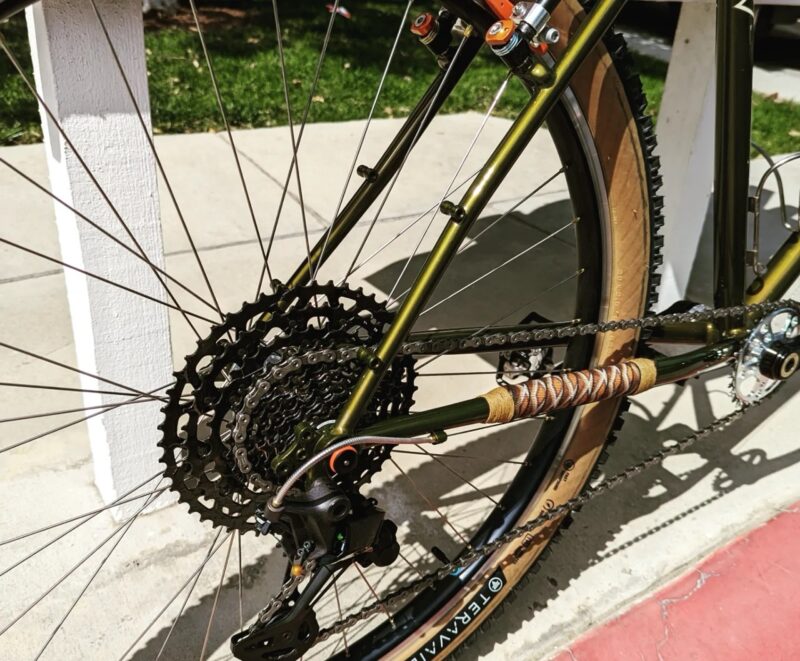
But I reconsidered when they told me who the LinkGlide was intended for, how it was supposed to perform, how much it cost, and how it was different. So, I said yes…I even told them what bike I intended to use it on, and they were on board.
The Cassette is Where the Tech is
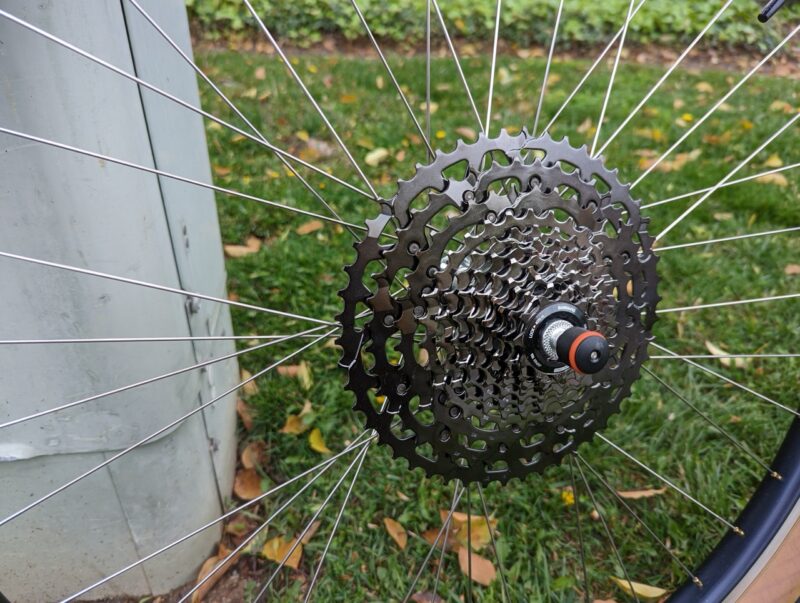

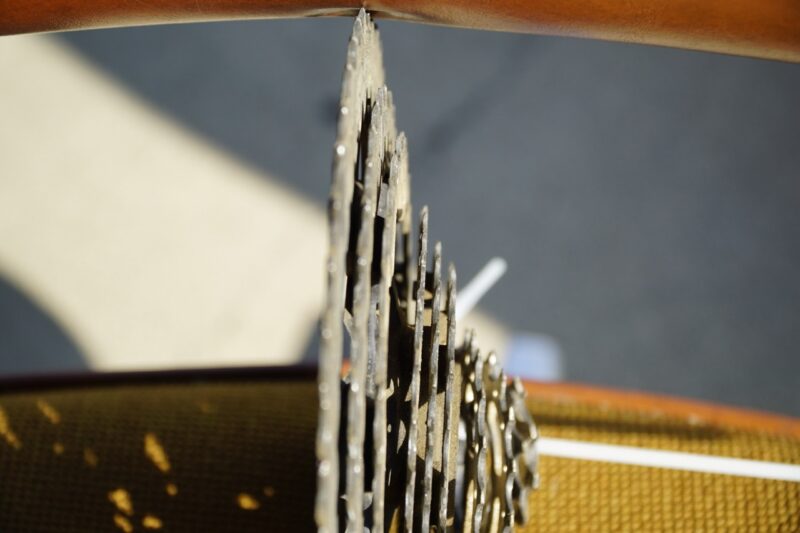
Built to fit a standard HG cassette body, the LinkGlide cassettes are designed to be extremely robust and durable. They boast teeth that are shaped differently than the HyperGlide teeth, are way thicker, and have “2-way shifting guides”. Shimano says that the cassettes are 3 times more durable than their HyperGlide equivalent. As you can see in the above pictures, the XT M8000 cassette’s teeth (photo on the right) are much thinner.
They are marketing LinkGlide as optimal for both high-torque shifting applications (e-bike users) and “less than perfect” shifting (newer cyclists). As mentioned before, the different shaped and taller shift ramps differ from the HG cassette. These ramps allow a completely different shift point. In theory, these ramps will offer a smoother shift while shifting under load.
The LinkGlide system is not supposed to suffer from, what Shimano calls, “shift shock” while shifting. You know the feeling…where the chain “drops” onto the cassette during a shift like you get sometimes with the HyperGlide system. I found this to be true… most of the time… more on that later.
XT LinkGlide Installation
The XT LinkGlide was installed on my Gus easily enough. I was just using the shifter, cassette, and rear derailleur. There’s not a LinkGlide crankset. Not sure if there ever will be. One of the cool things about the XT LinkGlide is that you don’t need a specific chain to run the group like you do with HyperGlide. LinkGlide will work with any Shimano or aftermarket chain.

They sent the group to me with the Dura-Ace/XTR chain, so that’s what I used. I actually had to reach out to get another chain because my Gus’s chainstays are so beautifully long.
The understated matte and gloss black color that adorns the XT LinkGlide was a pleasant surprise. Usually, or at least historically, Shimano’s more entry-level components have always looked well… entry-level. But, not so with with this group. It’s very handsome and looks high-end.

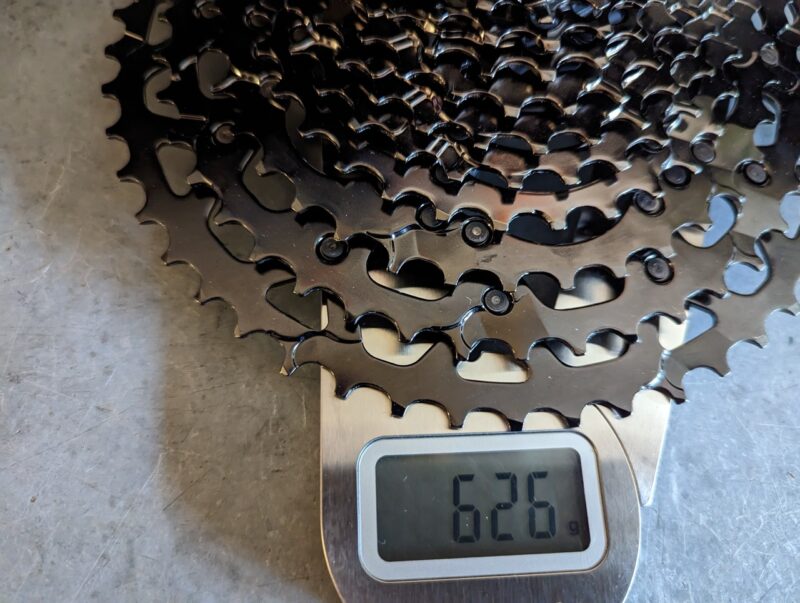
When I picked up the LinkGlide cassette box, it had some notable heft. If you’re used to smaller cassettes with the larger cogs made from aluminum, this could feel fairly heavy. So, I weighed it against a Shimano Deore CS-M6100 10-51t 12-speed cassette. The two cassettes aren’t compatible, but both cassettes have full steel cogs with an aluminum spider to reduce weight. The lower tier 12-speed Deore cassette has another gear, more range, and is still lighter, but only by 31g. I found the new 11-50t LinkGlide cassette to be 626g compared to the Deore cassette’s 595g.
Two Different Cassettes
That being said, the LinkGlide cassette that Shimano sent me is the LG700-11. This cassette is the best match for the XT LinkGlide series, but according to Shimano, “is a non-series cassette that lives outside of the branded families, it is the best pairing for the XT LinkGlide”.
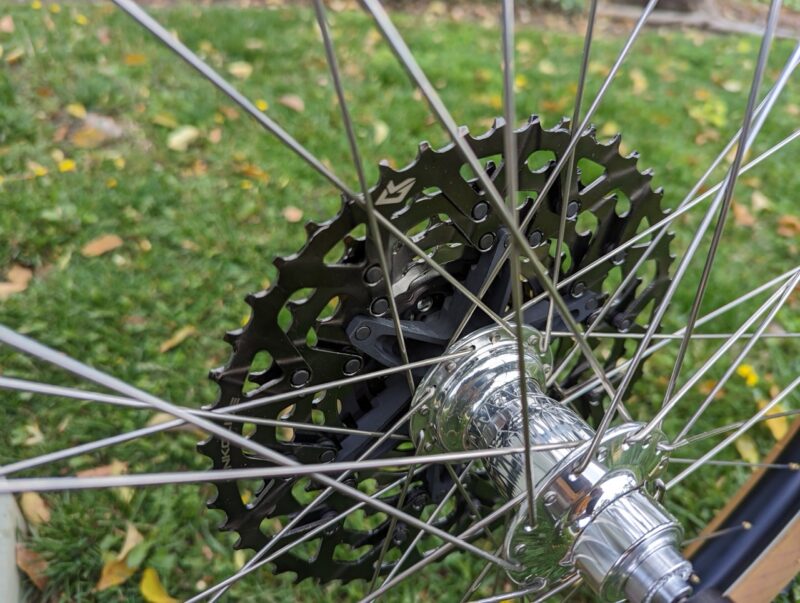
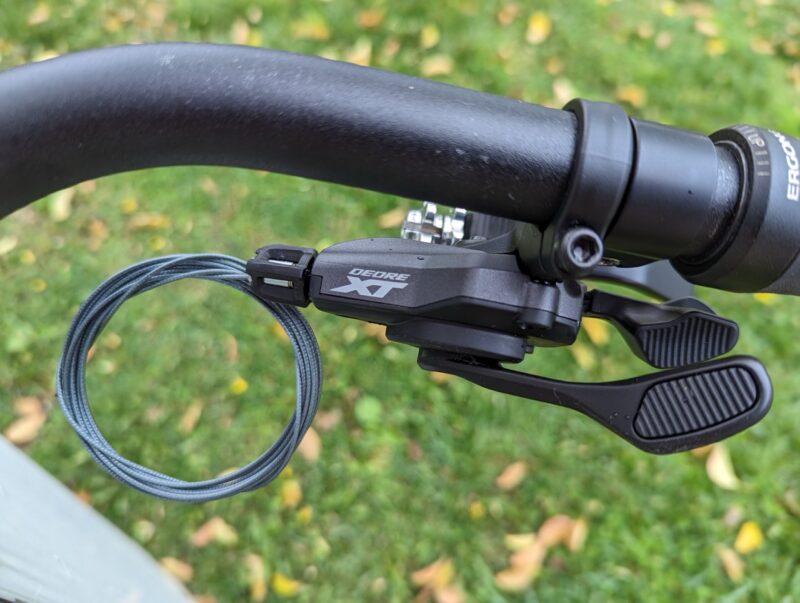
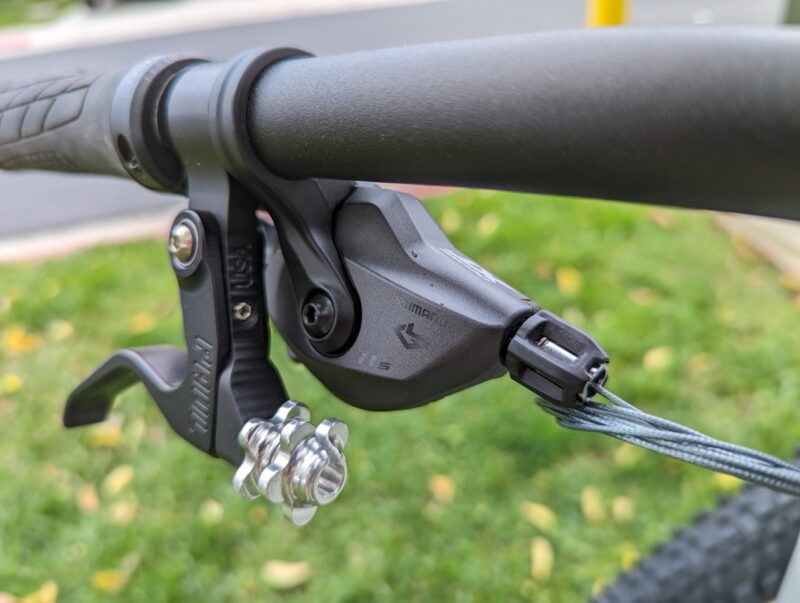
The LinkGlide shifter comes with a traditional clamp, like mine, or the I-Spec with its ergo adjustability. After installing the components, I ran the housing and cables. The rear derailleur was easy to set up. I just set the high and low stops and then set the cable and it shifted perfectly.
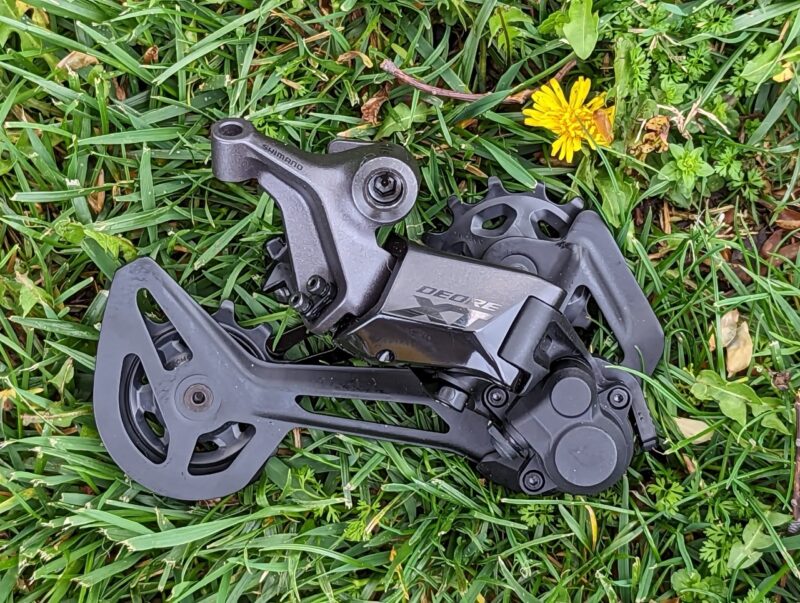
The derailleur doesn’t have a barrel adjuster, but the shifter does. This made it easy to adjust the “stretch” out of the cable after the first few rides. Other than my unique situation of combining two chains on my bike, the installation was easy.
How Did it Perform?
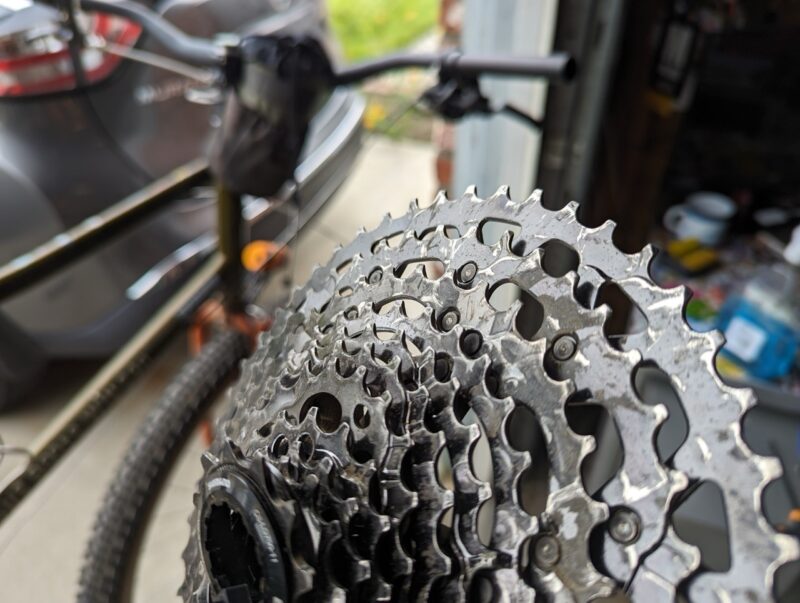
Overall I didn’t mind the way the XT LinkGlide shifted. It was a slower shift than that of the XT HyperGlide. And, that may have led to the occasional feeling that the shifting felt cumbersome. And speaking frankly, it took some getting used to.
Another small learning curve was the LinkGlide shifter. The shifter allows you to throw a two-gear jump up the cassette with one push. But, limits you to a single push/pull to come back down the cassette.
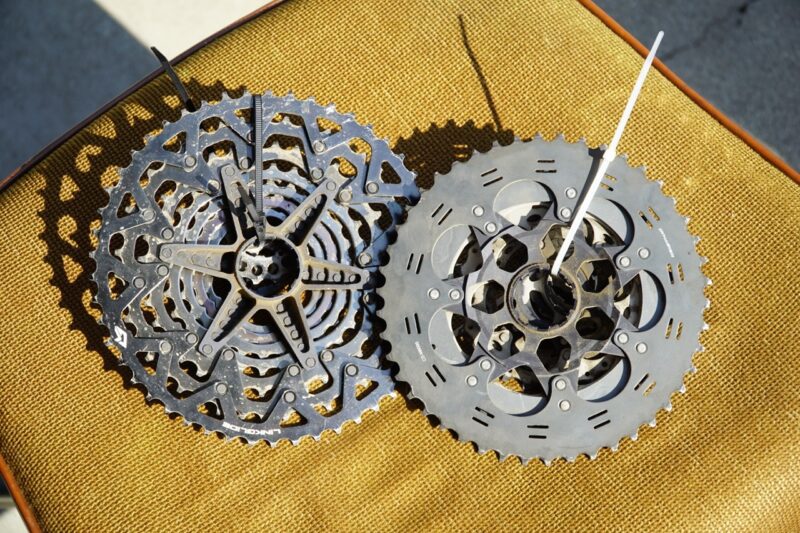
I’ve been riding the 11-speed XT M8000 stuff exclusively on every mountain bike I’ve owned since 2017. As most of you probably know, the M8000 shifter can throw three gears up the cassette in one long push. And can throw two gears back down the cassette in a quick “double-click” push.
So using the new LinkGlide shifter took a little getting used to as well. I had to adjust how I approached a few specific sections on two of my favorite rides because of it. And I’ll tell you, even after I got used to it, and have ridden hundreds of miles on it, I still prefer the way standard XT shifts over this.
In Conclusion
Overall, the XT 11-speed LinkGlide system seems to be very tough. And after hundreds of miles of use and purposeful abuse, it never missed a gear shift. I did, however, “suffer” from the occasional “shift shock” or “pedal shock” that Shimano says the LinkGlide eliminates.
It really wasn’t a big deal if you’ve been riding the HyperGlide stuff, cause it happens all of the time with that system. And maybe it would be eliminated if I was using this system on an eBike.

I never did quite get used to it, nor did I love how slow the LinkGlide shifted. Look, I know I’m not racing or anything, but I do like my bike stuff to work exceptionally well. And I’ve really gotten spoiled by the shifting of my current XT HyperGlide stuff. I am a non-transitional human, and I love my M8000. Sue me.
However, if you don’t have that high-end reference point, new riders will find the shifting more than adequate. Excellent even, if the comparison is other inexpensive groups that come on entry-level bikes.
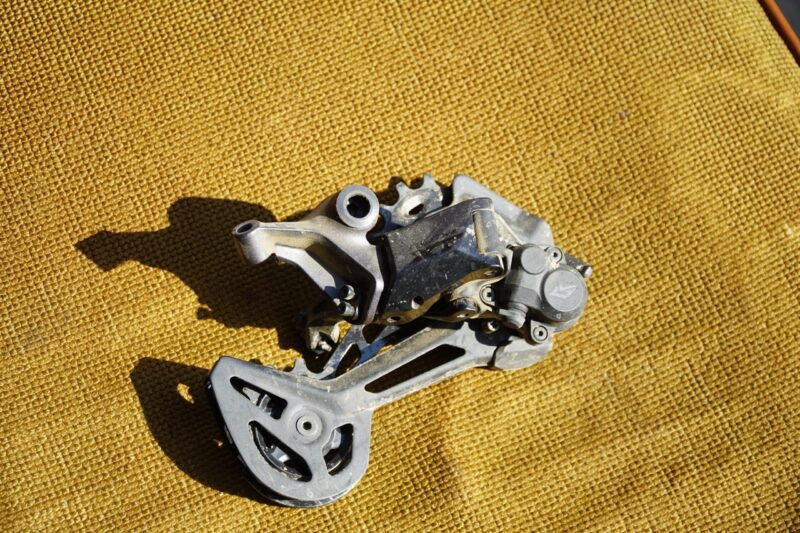
If you have an eBike, don’t need 12 speeds, and you’re shifting under large amounts of torque, then the XT LinkGlide is your group. If you are ok trading weight savings for durability? Then the XT LinkGlide is your group. The sheer durability of the LinkGlide cassette will save you money on chains and cassettes in the long run. If I owned an eBike, I would run the XT 11-speed LinkGlide system, and it would be fine with me.
It’s easy on the wallet as well. At Jenson USA, as of the writing of this article, the prices are as follows:
- XT LinkGlide Rear Derailleur: $122
- XT LinkGlide Shifter: $67
- LinkGlide LG500 Chain: $23
- LinkGlide LG700 11-speed Cassette (as tested): $130
That’s only $342 before applicable tax and shipping for the group. That includes the cassette that was tested, a LinkGlide chain, the XT LinkGlide derailleur, and the XT LinkGlide shifter. That is a great deal.
A Different Take on XT LinkGlide (From Zach’s POV)
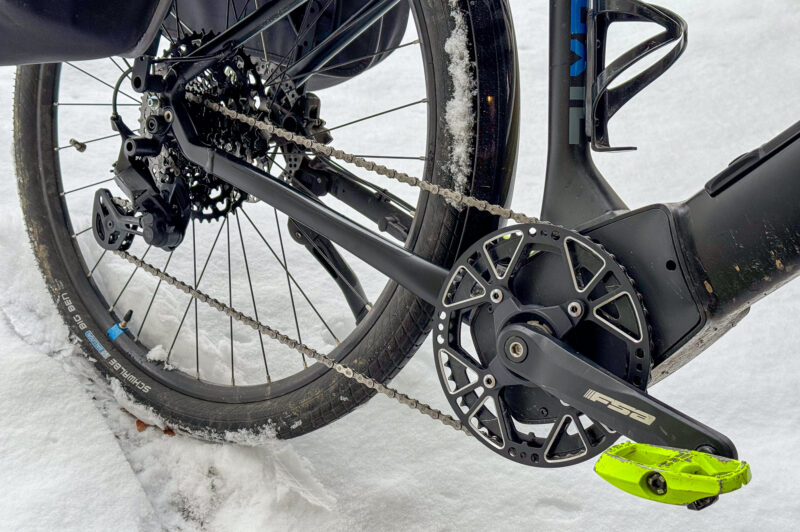
Along with Ron, I also got an XT LinkGlide kit to check out. Originally, I had planned to use it on a fat bike. My thought was that winter road salt, sea salt, and all the mud and grit are notoriously difficult on fat bike drivetrains, and something that was more durable and less expensive would be a great option.
But… I also had some lighter Shimano 12-speed Deore/XT parts available for the build, and my inner weight weenie got the best of me. That left me with an XT LinkGlide group to put on something else.
Then it hit me. My Raleigh Redux commuter came with a 9-speed drivetrain that was in need of an update. Given that LinkGlide is designed to work well with ebikes, it seemed like a perfect match… only the hybrid gearing up front made it a little interesting.
Like Ron, I also needed a longer chain to make the big cassette work with the large chainring. However, I found out that Shimano offers an E-MTB chain, the CN-E8000-11. This chain is 138 links instead of 116, and was long enough for me without having to use two chains. I also had to remove one side of the chain guide plate around the chainring and shift the chainring over using chainring spacers to create a chainline that would work with the rear cassette. These changes weren’t due to anything related to LinkGlide, but rather me trying to run a wide range MTB drivetrain on a hybrid e-bike with a big chainring.
In the end, it all worked surprisingly well and I was left with a drivetrain that had much more range. Like Ron, I found the shifting to be different, but I didn’t have any problem getting used to it. It’s a very positive feel to the shifter and lacks some of the finesse that you’ll find at the higher end. With that said, it works great, especially when hammering through the gears on an ebike.
Prior to the LinkGlide install, I’ve actually broken more chains on this Raleigh than my other bikes combined. So the fact that the LinkGlide drivetrain is still operating flawlessly, is impressive. Because of that, I’d have no reservations about recommending this group to anyone looking for a durable drivetrain on a budget.
